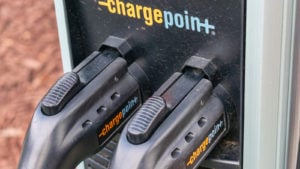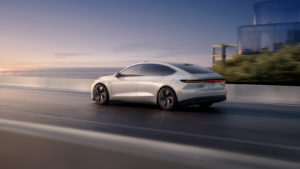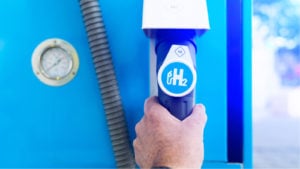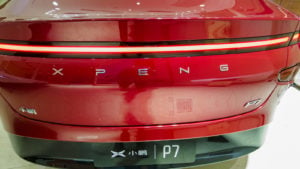Along with the pandemic, 2020 will be remembered on Wall Street as the year of electric vehicle (EV) and alternative energy stocks. For instance, the International Energy Agency is planning soon to reveal the world’s first global roadmap to net-zero emissions by 2050. And EVs are poised to play a central role in this global effort. Therefore, this article introduces seven auto stocks embracing our changing transit needs.
Overall, recent metrics indicate that global plug-in vehicle sale reached more than 3.2 million in 2020. Additionally, about one in 40 new cars is already electric. Analysts estimate that at least 20% of all new car sales will be electric in ten years.
Moreover, academic research also highlights that, “the automotive industry is experiencing a moment of innovation. With electronics gaining importance, the need to find sustainable solutions and the rampant availability of sharing platforms, the dynamics of this sector is witnessing a paradigm shift.”
Overall, EV stocks are likely to become even more attractive after President Joe Biden’s commitment to make climate change a top priority in the next four years. Meanwhile, traditional automakers are aggressively expanding into electric vehicles, related battery systems, and other green energy alternatives.
As the world increasingly steers toward EVs, here is a list of seven auto stocks that embrace our changing transit needs:
- Switchback Energy Acquisition (NYSE:SBE)
- Fisker (NYSE:FSR)
- Nio (NYSE:NIO)
- Plug Power (NASDAQ:PLUG)
- Tesla (NASDAQ:TSLA)
- Workhorse (NASDAQ:WKHS)
- Xpeng (NYSE:XPEV)
Now, let’s dive in and take a closer look at each one.
Auto Stocks: Switchback Energy Acquisition (SBE)

ChargePoint has recently agreed to merge with the special purpose acquisition company (SPAC) Switchback Energy Acquisition, generating considerable buzz on Wall Street. ChargePoint operates more than 100,000 charging ports, commanding almost three-quarters of charging-station market share in North America. Many leading corporations already use these charging stations at their corporate offices.
Additioanlly, the company expects to reach revenue of about $135 million in 2020, by leveraging its dominant market share in commercial clients. In turn, we should expect new ChargePoint to further extend its reach in corporate office contracts.
CFO Scott McNeill has recently cited, “The EV charging industry is accelerating and it is expected that charging infrastructure investment will be $190 billion by 2030. As a first mover in the space, ChargePoint has distinguished itself as the number one EV charging network….”
The reverse-merge is is expected to finalize in the coming weeks, when SBE stock shares will convert to ChargePoint shares. The new entity will start trading under the ticker “CHPT”. SBE stock price currently hovers around $41, giving it a market value of $1.6 billion.
Collectively, ChargePoint offers an alternative route for those interested in the EV market. As long as the industry grows, ChargePoint’s revenue should increase, too. Thus, long-term, I’m bullish on the the company. However, the stock is price is likely to be volatile as the merger-close date approaches.
Fisker (FSR)

Manhattan Beach, California-based Fisker is another name among the auto stocks. The stock started trading on the NYSE in October 2020, following a reverse-merger Spartan Energy Acquisition Corp., a SPAC at the time. Fisker’s business model involves designing electric vehicles, while the company leaves the manufacturing to other companies with more know-how and scale capability.
Moreover, the company is still pre-revenue — making FSR stock a speculative play. The Fisker Ocean, an electric sport utility vehicle (SUV), is expected to be available in two years. Until then, it will possibly burn through significant cash. The company claims its model will be one of the most affordable EVs on the market. It plans to offer a $379-per-month lease package that includes all maintenance and servicing.
In recent weeks, Fisker has signed partnerships in the U.K. for offering its autos there in 2020. In fact, it announced that London will be the location for the country’s first consumer experience center — set to open in 2022.
Analysts believe Fisker’s proposed asset-light model will being both advantages and disadvantages. As a result, FSR stock is likely to be volatile in the coming months.
Auto Stocks: Nio (NIO)

China-based Nio designs and sells smart electric vehicles. Investors have been excited about its autonomous-driving vehicles that rely on artificial intelligence (AI). Touted as the “Tesla of China,” it is one of the early comers in China’s premium EV market. That said, China is the world’s largest EV market, ” with 2.3 million electric vehicles in active use. To put that into perspective, that’s nearly half (45%) of the global stock of EVs.”
Moreover, Nio announced third-quarter results in mid-November. Revenues was 4,526 million RMB (or $666.6 million), an increase of 146.4% year-over-year (YOY). Net loss was 1,047 million RMB (or $154.2 million), representing a decrease of 58.5% YOY. And Nio also lost 12 cents a share during the third quarter.
Nio’s CFO Steven Wei Feng said, “…we achieved positive cash flow from operating activities for the second sequential quarter.” On Feb. 1, management provided the delivery update for January 2021. In it, the firm said, “NIO delivered 7,225 vehicles in January 2021, increasing by 352.1% year-over-year. Cumulative deliveries of ES8, ES6 and EC6 as of January 31, 2021 reached 82,866.”
That said, investors were pleased to see this was a record high number in regards to monthly deliveries. Right now, Nio stock’s price-book (P/B) and price-sale (P/S) ratios are 71.93 and 32.16, respectively, meaning the shares are frothy. In the past year, NIO stock managed to ride on investors’ appetite. And despite potential pullbacks in price in 2021, I expect the bull-ride to continue in the stock.
Plug Power (PLUG)

Plug Power develops hydrogen fuel cell systems used for the industrial off-road market. A significant portion of its sales comes from selling fuel-cells for forklifts to Amazon (NASDAQ:AMZN) and Walmart (NYSE:WMT). 2020 became the year when both consumers and investors gave the seal of approval on hydrogen-powered fuel cells for becoming an important part of the green-energy future.
According to the International Energy Agency (IEA), “The time is right to tap into hydrogen’s potential to play a key role in a clean, secure and affordable energy future… [N]ow is the time to scale up technologies and bring down costs to allow hydrogen to become widely used.”
Moreover, the company reported Q3 results on Nov 9. Net revenue came in at $83.5 million, compared to $38.9 million a year ago. GAAP net loss increased to $39.4 million, compared to $18.1 million in Q3 2019. Meanwhile, GAAP net loss per share was 11 cents. A year ago, it had been 8 cents. Cash, and equivalents were $731.4 million, compared to $198.3 million in 2019.
CEO Andy Marsh cited, “I’d like to highlight our operational performance. Company achieved $126 million in gross billings. This represents 106% increase from the third quarter of 2019. This quarter is a strong validation of our business model in years to come.”
Plug Power stock had an exceptional 2020 as the share price soared by 1,000%. Currently, PLUG stock’s P/B and P/S ratios are 51.42 and 65.03, respectively. Potential investors might want to wait for a pullback in the share price before committing new capital into the company.
Auto Stocks: Tesla (TSLA)

EV darling Tesla, whose segments include Automotive, and Energy Generation and Storage, needs little introduction. In early February, Morgan Stanley (NYSE:MS) became one of the latest TSLA stock bulls and raised the target price to $810. The shares are currently hovering at $863.
Furthermore, the automaker released FY20 Q4 results in late January. Revenue was $10.7 billion, representing a 46% YOY increase from $7.4 billion in the previous year. Non-GAAP net income was $903 million, an increase of 134% YOY. Non-GAAP adjusted earnings per diluted share was 80 cents for the quarter, compared to 41 cents in the prior year period.
Cash and equivalents were $19.4 billion at the end of the fourth quarter, increasing 209% YoY. Free cash flow was $1.9 billion, an 84% YOY increase.
Management cited:
“This past year was transformative for Tesla. Despite unforeseen global challenges, we outpaced many trends seen elsewhere in the industry as we significantly increased volumes, profitability and cash generation. For the full year 2020, we achieved an industry-leading 6.3% operating margin (despite an increase of SBC to $1.7B). Teams across our organization, including supply chain, manufacturing, logistics and delivery, rose to the occasion to ensure strong execution.”
TSLA shares have returned by over nwarly 500% in the last year. Forward P/E and P/S ratios are 200 and 28.66, respectively. In other words, the valuation level is high. As a result, the Street debates whether the stock price can stay fundamentally overvalued in the long-run. For now, investors’ love with the company continues. However, in the coming weeks, there will likely be dips in price, offering better entry points.
Workhorse Group (WKHS)

Ohio-based Workhorse aims to become a leader in the last-mile delivery vehicles segment. Thus management focuses on providing sustainable and cost-effective drone-integrated electric vehicles. Its products include C-series electric delivery truck and Package Delivery Aircraft, HorseFly.
On Jan. 21, Workhorse reported Q3 results. Sales came at $565,000, representing more than a 13% increase YOY. Net loss was $84.1 million, compared with a net loss of $11.5 million a year ago. The increase was mainly due to $74.3 million interest expense. Cash and equivalents were $80.2 million, compared to $23.9 million in the prior year period.
CEO Duane Hughes cited, “Our strategic partnership approach to engaging with dealerships has paid off very quickly as evidenced by our recent 500 truck order from Pritchard Auto Company that will be financed by HCA.”
In early 2021, Workhouse received an order for more than 6,000 electric delivery vans from Canada-headquartered Pride Group Enterprises. That said, bullish WKHS investors are betting on strong demand growth from big online retailers, leading to soaring revenues in the coming years. Interested investors could consider buying into declines.
Auto Stocks: Xpeng (XPEV)

China-based XPeng, a smart EV company, is the last of our auto stocks here. Like Nio, it also offers autos integrated with advanced AI and autonomous-driving technologies. Its two primary products are a type of sport utility vehicle, named G3, and a type of four-door sports sedan, named P7.
The company, which is backed by Alibaba (NYSE:BABA), posted Q3 metrics in late November. Revenue came at $293.1 million, an increase of 342.5% YOY. Non-GAAP net loss was $127.4 million, an increase of 206% YOY. Cash and equivalents were $2,945 million.
CEO He Xiaopeng said, “In our first quarter as a public company we achieved strong operating and financial results, highlighted by the rapid growth in deliveries of our P7 Smart EV.”
Overall, the company’s current market share in China is currently less than 1%. However, investors are betting that this figure is likely to increase in the decade. For instance, Xpeng reported a record delivery of 5,700 vehicles in December, representing a 326% increase YOY. Investors who are bullish on the Chinese EV market should keep XPEV stock on their radar.
On the date of publication, Tezcan Gecgil did not have (either directly or indirectly) any positions in the securities mentioned in this article.
Tezcan Gecgil has worked in investment management for over two decades in the U.S. and U.K. In addition to formal higher education in the field, she has also completed all 3 levels of the Chartered Market Technician (CMT) examination. Her passion is for options trading based on technical analysis of fundamentally strong companies. She especially enjoys setting up weekly covered calls for income generation.
